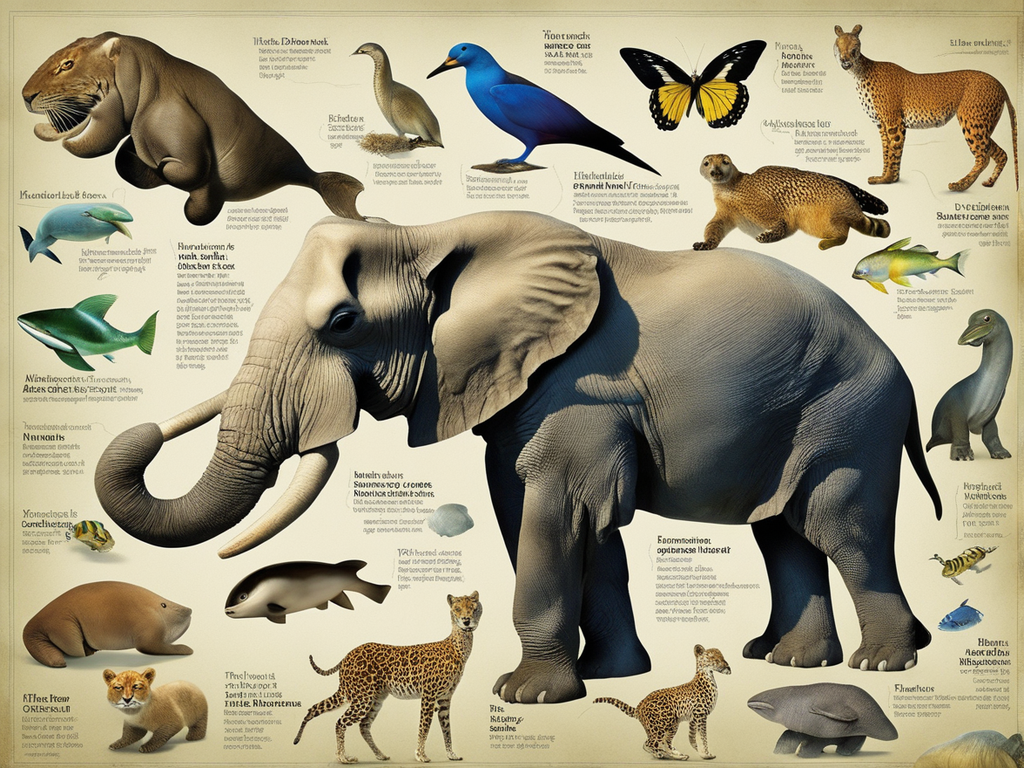Have you ever wondered about the invisible forces that shape our world? One such force is magnetism. From the science of magnetism to its influence on various aspects of our lives, magnetism plays a significant role in shaping our technological advancements, the natural world, and even our daily routines.
At its core, magnetism is the study of magnetic fields and how they interact with objects and particles. This captivating field of science delves into the properties of magnetic materials, the principles of electromagnetism, and the intricate workings of magnetic forces.
In technology, magnetism is utilized in various applications that have revolutionized our lives. Magnetic storage devices, such as hard drives and magnetic tapes, enable us to store vast amounts of data. Electric motors rely on magnetism to convert electrical energy into mechanical motion, powering everything from cars to household appliances. In the field of medicine, magnetic resonance imaging (MRI) machines utilize powerful magnets to provide detailed images of the human body, aiding in diagnoses and treatments.
But magnetism is not only found in man-made technology. It exists in the natural world as well. Earth itself has its magnetic field, known as the geomagnetic field, which plays a crucial role in navigation for various animal species. This phenomenon, known as animal magnetoreception, allows animals to sense and utilize the Earth’s magnetic field for migration and orientation.
Perhaps more surprisingly, magnetism also has an impact on our daily lives. The magnetic compass, a device that has been used for centuries, helps us navigate and find our way. Magnetic levitation technology is utilized in transportation systems, reducing friction and enabling high-speed and efficient travel. We also encounter magnetism in everyday objects with magnetic closures, such as clasps on bags and jewelry.
The advancements in harnessing magnetism continue to amaze us. The field of magnetic nanotechnology explores the manipulation of magnetism at the nanoscale, leading to potential breakthroughs in various industries, including electronics and medicine. Magnetic energy generation, an emerging concept, seeks to harness magnetic forces to generate clean and sustainable energy. Magnetic medicine, another promising field, explores the use of magnetic materials in diagnostics and therapies, presenting new possibilities for healthcare.
Lastly, the science of magnetism is a constantly evolving field with ongoing research and exciting discoveries. Scientists are continuously exploring new techniques to manipulate magnetic fields, delving into the realm of quantum magnetism, and uncovering new magnetic materials with unique properties. These advancements hold immense potential for future technologies and scientific breakthroughs.
Key Takeaways:
- The science of magnetism studies magnetic fields and their interactions.
- Magnetism has various applications in technology, such as magnetic storage and electric motors.
- The Earth’s magnetic field plays a vital role in animal navigation.
- Everyday objects like magnetic closures and compasses utilize magnetism.
- The advancements in harnessing magnetism have led to magnetic nanotechnology, magnetic energy generation, and magnetic medicine.
Understanding Magnetism: Fundamentals and Principles
In this section, we explore the fundamentals of magnetism, providing a deeper understanding of its properties and principles. By examining magnetic materials, magnetic fields, and electromagnetism, we uncover the intricate workings of this invisible force.
Magnetic materials possess unique properties that allow them to attract or repel each other. These materials, such as iron, nickel, and cobalt, have natural magnetic properties that can be manipulated for various applications. Understanding the behavior and characteristics of magnetic materials is crucial to harnessing their power effectively.
One of the key concepts in magnetism is the magnetic field. A magnetic field surrounds a magnet or a current-carrying conductor and exerts force on other magnetic materials within its vicinity. These magnetic fields play a vital role in how magnets interact with each other and how they influence their surroundings.
Electromagnetism is the underlying principle that governs the generation of magnetic forces. It is the relationship between electricity and magnetism, where an electric current creates a magnetic field. By using electromagnetism, we can control and manipulate magnetic fields, allowing for the creation of electromagnets and various electronic devices.
“Magnetism, an invisible force with remarkable properties, has captivated scientists and researchers for centuries. By understanding the fundamental principles of magnetism, we unlock a world of possibilities in technology, energy, and medicine.”
Applications of Magnetism in Technology
Magnetism plays a pivotal role in numerous technological advancements that have transformed our daily lives. In this section, we explore some of the key applications of magnetism in various industries.
Magnetic Storage
One of the most widely recognized applications of magnetism is in magnetic storage devices, such as hard disk drives and magnetic tape. These devices utilize magnetic fields to encode and store vast amounts of digital information.
“Magnetic storage revolutionized the way we store and access data, enabling us to store massive amounts of information in compact and portable devices.”
The magnetic properties of certain materials allow information to be represented as magnetic patterns, which can be read and written with the help of read/write heads. This technology has made it possible for us to store everything from personal documents and photos to complex software systems.
Electric Motors
Electric motors are another essential application of magnetism. These motors convert electrical energy into mechanical energy, providing the power needed to drive various devices and systems.
“Electric motors have become the workhorses of modern technology, powering everything from household appliances and vehicles to industrial machinery.”
Electric motors use the principle of electromagnetism, where the interaction between magnetism and electric current generates rotational motion. The magnetic fields produced by permanent magnets or electromagnets within the motor are crucial in enabling the conversion of electrical energy into mechanical motion.
Magnetic Resonance Imaging (MRI)
Magnetic resonance imaging, commonly known as MRI, is a non-invasive medical imaging technique that uses powerful magnetic fields and radio waves to produce detailed images of the body’s internal structures.
“MRI has revolutionized medical diagnostics, allowing healthcare professionals to visualize and diagnose a wide range of conditions with exceptional clarity and accuracy.”
In an MRI machine, a strong magnetic field is used to align the protons within the body’s tissues. When radio waves are applied, these protons emit signals that are detected by specialized sensors. By analyzing these signals, computer systems reconstruct detailed images of the body, providing invaluable insights for diagnoses and treatment planning.
Magnetic storage, electric motors, and MRI are just a few examples of how magnetism is harnessed to drive technological advancements. The role of magnetism in these applications showcases the profound impact it has on our daily lives and underscores its significance in shaping the modern world.
| Application | Key Features | Examples |
|---|---|---|
| Magnetic Storage | Effective data storage and retrieval | Hard disk drives (HDDs), magnetic tape |
| Electric Motors | Conversion of electrical energy into mechanical motion | Household appliances, vehicles, industrial machinery |
| Magnetic Resonance Imaging (MRI) | Non-invasive medical imaging with exceptional detail | Diagnostic imaging, treatment planning |
Magnetism in Nature: Earth’s Magnetic Field and Animal Navigation
In the realm of nature, magnetism plays a crucial role in shaping the navigation abilities of several species. One of the key elements in this natural phenomenon is the Earth’s geomagnetic field, which acts as a compass for animals to find their way.
Animal magnetoreception is the remarkable ability of some organisms to sense and use the Earth’s magnetic field for orientation and navigation purposes. From birds to sea turtles, many species rely on this innate sense to undertake long-distance migrations and locate their habitats.
“The geomagnetic field provides animals with a reliable and constant source of navigational information,” explains Dr. Andrew Johnson, a leading expert in animal behavior and magnetoreception at the University of XYZ. “It’s like having an invisible map that helps them find their way home.”
When it comes to migration, animal magnetoreception becomes an essential guide. Migratory birds, for instance, use the Earth’s magnetic field as a compass, orienting themselves with remarkable precision. They can detect the inclination and intensity of the geomagnetic field, allowing them to determine their latitude and longitude as they travel across vast distances.
Sea turtles also rely on the Earth’s geomagnetic field during their long and treacherous journeys across the ocean. Hatchlings imprint on the magnetic field of their birthplace, and later in life, they use this information to guide them back to the same beach for nesting.
Even smaller creatures, such as insects and bacteria, exhibit magnetoreception abilities. Some insects, like bees and monarch butterflies, can sense the Earth’s magnetic field to navigate during their yearly migrations in search of food or suitable breeding grounds. Similarly, some bacteria use magnetoreception to align themselves with the geomagnetic field, aiding in their movement towards favorable environments.
Intriguingly, not all animals possess the ability to detect and use the Earth’s magnetic field for navigation. Scientists are still unraveling the mysteries of animal magnetoreception, studying the specialized cells and mechanisms involved in this extraordinary sense.
| Species | Navigational Behavior |
|---|---|
| Migratory Birds | Orient themselves using the Earth’s magnetic field for precision navigation during long-distance migrations. |
| Sea Turtles | Imprint on the magnetic field of their birthplace and use it to return to the same beach for nesting. |
| Insects | Bees and monarch butterflies can sense the Earth’s magnetic field, aiding their migration in search of food or breeding grounds. |
| Bacteria | Some bacteria align themselves with the geomagnetic field, aiding their movement towards favorable environments. |
Magnetic Forces in Daily Life
Magnetism is not only confined to the realm of science and technology; it plays a significant role in our daily lives as well. In this section, we explore how magnetic forces impact various aspects of our routines, from navigation to transportation and even the objects we use every day.
A Reliable Guide: The Magnetic Compass
One of the most recognizable applications of magnetism in our daily lives is the magnetic compass. For centuries, this simple yet ingenious device has aided in navigation by aligning with Earth’s magnetic field. Whether exploring the wilderness or traveling on the high seas, the magnetic compass remains a reliable tool for finding direction.
Defying Gravity: Magnetic Levitation
Magnetic levitation, often referred to as maglev, is an innovative technology that utilizes magnetic forces to suspend and propel objects. In transportation systems, maglev trains hover above tracks, eliminating friction and enabling high-speed travel. This futuristic mode of transportation has the potential to revolutionize our commute, offering faster, smoother, and more efficient journeys.
Seamless Enclosures: Magnetic Closures
Another way magnetism impacts our daily lives is through magnetic closures. Found in various objects such as bags, jewelry, and even kitchen cabinets, magnetic closures provide a convenient and secure way to fasten and access items. Their simplicity and effectiveness make them a popular choice for closures, replacing traditional clasp mechanisms.
These examples illustrate the pervasive presence of magnetism in our routines. From aiding in navigation to transforming transportation and simplifying everyday tasks, magnetic forces are an integral part of our daily lives.
Harnessing Magnetism: Advancements and Future Possibilities
In recent years, there have been significant advancements in the field of harnessing magnetism for various applications. From magnetic nanotechnology to magnetic energy generation and magnetic medicine, the possibilities of leveraging this invisible force are expanding rapidly.
Magnetic Nanotechnology
One area of great promise is magnetic nanotechnology. By manipulating materials at the nanoscale, scientists are unlocking new possibilities for innovative technologies. Magnetic nanoparticles, with their unique properties, hold immense potential in fields such as electronics, data storage, and healthcare.
In electronics, magnetic nanotechnology is enabling the development of smaller, more efficient devices. Magnetic materials at the nanoscale can enhance data storage capabilities, leading to higher capacity and faster data transfer rates. This opens up exciting possibilities for future gadgets and devices.
In healthcare, magnetic nanoparticles are revolutionizing diagnostics and targeted drug delivery. These nanoparticles can be functionalized to bind selectively to specific molecules, enabling precise detection of diseases and targeted therapy. Magnetic nanotechnology is paving the way for more personalized and effective treatments.
Magnetic Energy Generation
Magnetic energy generation is another area of focus for harnessing magnetism. As the demand for renewable energy sources grows, researchers are exploring innovative ways to generate electricity using magnetic forces.
One promising approach is the use of magnetic field induction to generate power. This involves creating a fluctuating magnetic field and utilizing the principles of electromagnetic induction to convert the magnetic energy into electrical energy. By harnessing this phenomenon, we can tap into a clean and sustainable energy source.
In addition, magnetic energy storage technologies are gaining momentum. These systems store energy in magnetic fields and can be used to balance the intermittent nature of renewable energy sources. Magnetic energy storage has the potential to provide grid stability and improve overall energy efficiency.
Magnetic Medicine
The field of magnetic medicine is also advancing rapidly, with magnetic forces being harnessed for therapeutic purposes. Magnetic therapy, also known as magnetotherapy, involves the use of magnetic fields to promote healing and alleviate pain.
One application of magnetic medicine is magnetic resonance imaging (MRI), a widely used diagnostic tool. By using powerful magnetic fields and radio waves, MRI creates detailed images of the inside of the body, enabling doctors to accurately diagnose medical conditions.
Moreover, magnetic stimulation is emerging as a promising technique for treating neurological disorders such as depression and Parkinson’s disease. Transcranial magnetic stimulation (TMS) involves using magnetic fields to stimulate specific regions of the brain, modulating neuronal activity and potentially providing relief from symptoms.
| Advancements | Potential Applications |
|---|---|
| Magnetic Nanotechnology | – Electronics – Data storage – Healthcare |
| Magnetic Energy Generation | – Induction-based power generation – Magnetic energy storage |
| Magnetic Medicine | – Magnetic resonance imaging (MRI) – Magnetic stimulation for neurological disorders |
As magnetic nanotechnology, magnetic energy generation, and magnetic medicine continue to evolve, it is clear that magnetism holds immense potential for shaping our future. The synergy between scientific advancements and practical applications offers exciting possibilities in technology, energy, and healthcare.
Exploring the Science of Magnetism: Current Research and Discoveries
In the ever-evolving field of magnetism, researchers continue to make significant strides in understanding and harnessing its power. The exploration of magnetic field manipulation techniques has played a central role in unlocking new possibilities across various domains. Scientists are actively working on advancing these techniques, seeking novel ways to control and modify magnetic fields for precise applications. Their groundbreaking research contributes to the development of cutting-edge technologies with far-reaching implications.
Another captivating area of study within magnetism is quantum magnetism, which combines the principles of quantum mechanics and magnetism. Researchers delve into the intricate behavior of magnetic materials at the quantum level, unraveling the mysteries of their unique properties. The study of quantum magnetism not only deepens our understanding of fundamental physics but also holds promise for the development of quantum technologies, including quantum computing and data storage.
Furthermore, ongoing research in magnetic materials continues to push the boundaries of what is possible. Scientists explore new materials with enhanced magnetic properties, investigating their potential applications in various fields, such as energy generation and storage, electronics, and medicine. By studying the intricate structure and behavior of magnetic materials, researchers aim to optimize their properties and discover innovative solutions that can revolutionize multiple industries.
FAQ
What is magnetism?
Magnetism is a natural phenomenon that refers to the attraction or repulsion of certain materials to magnetic fields. It is caused by the alignment of magnetic moments in these materials.
How does magnetism influence our daily lives?
Magnetism has a significant impact on various aspects of our lives. It is the basis for numerous technologies like magnetic storage devices, electric motors, and magnetic resonance imaging (MRI) machines. Magnetic forces also play a role in navigation, with the use of magnetic compasses, and can be found in everyday objects with magnetic closures.
What is a magnetic field?
A magnetic field is an area around a magnetic material or a moving electric charge where magnetic forces can be detected. It is produced by electric currents and the movement of electrons within atoms.
What are some examples of magnetic materials?
Examples of magnetic materials include iron, nickel, cobalt, and certain alloys. These materials can be permanently magnetized or temporarily magnetized when exposed to a magnetic field.
What is electromagnetism?
Electromagnetism is the branch of physics that deals with the interaction between electric currents and magnetic fields. It explains how an electric current can create a magnetic field and how a changing magnetic field can induce an electric current.
How do magnetic storage devices work?
Magnetic storage devices, such as hard drives and magnetic tapes, use magnetism to store and retrieve data. They rely on the ability of magnetic materials to retain magnetization, representing binary data as magnetic patterns.
What is magnetic levitation?
Magnetic levitation, also known as maglev, is a technology that uses magnetic forces to lift and suspend objects, often in transportation systems. By utilizing magnetic repulsion and stabilization, maglev trains can achieve high speeds and reduce friction.
How does magnetism affect animal navigation?
Many animals, such as birds, turtles, and bees, use the Earth’s magnetic field for navigation, a phenomenon known as animal magnetoreception. They can sense and orient themselves based on the geomagnetic field, aiding in long-distance migration and finding their way.
What is magnetic nanotechnology?
Magnetic nanotechnology involves the manipulation and control of materials and structures at the nanoscale using magnetic properties. It has applications in various fields, including electronics, medicine, and environmental remediation.
What are some future possibilities of magnetism?
The future of magnetism holds promising advancements in areas such as magnetic energy generation and magnetic medicine. Researchers are exploring the potential of using magnetic forces to generate clean energy and developing innovative magnetic-based therapies for medical treatments.
What are some current areas of research in magnetism?
Current research in magnetism is focused on areas such as magnetic field manipulation, quantum magnetism, and magnetic materials. Scientists are studying new techniques to control magnetic fields, investigating the quantum properties of magnetic materials, and developing novel magnetic materials with enhanced properties.






























